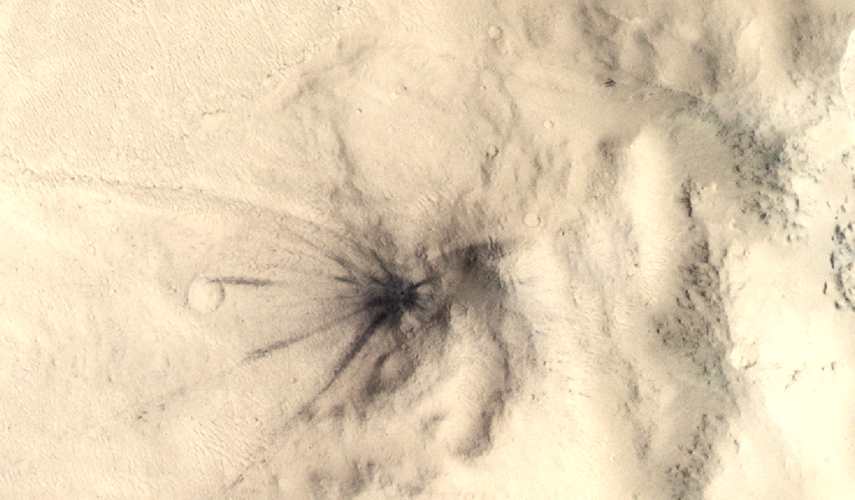A rock from space slammed into Mars in February 2021, causing seismic waves that reached NASA’s InSight spacecraft, located 1640 km away. The impact left a 21-m diameter crater and dented an area of about 1400 m. The blast was captured in this image by ESA's ExoMars Trace Gas Orbiter (TGO) using its Colour and Stereo Surface Imaging System (CaSSIS).
Marsquakes – the earthquakes of Mars – and meteor impacts are common on our neighbouring planet. In the last two decades, scientists have scrutinised many images and manually identified hundreds of new impact craters across the martian surface.
Researchers have recently turned to artificial intelligence to save them from some tedious detective work and to make connections between data collected by five different instruments orbiting Mars. Europe’s CaSSIS camera is one of them.
Not one, but two recent related papers in the Geophysical Research Letters scientific journal suggest that quite a few of the seismic events recorded by InSight, previously thought originate from tectonic sources, could actually be caused by meteor strikes. This false-colour image of a new impact crater in Cerberus Fossae, a seismically active region on Mars, helped the discovery.
Researchers gathered high-resolution images coming from several cameras orbiting Mars: Mars Reconnaissance Orbiter’s Context Camera and HiRISE, ESA’s CaSSIS on the Trace Gas Orbiter, and Mars Express’s High Resolution Stereo Camera. Their images helped locate a fresh crater that appeared at the same time as one of the quakes detected by InSight’s sensors.
The successful match helped researchers refine their understanding of Mars’s seismic signals, including how different types of vibrations travel through the planet at different depths and speeds.
Knowing exactly where this impact took place has made researchers realise that waves travel faster and deeper through the planet than previously thought – a sort of seismic highway. Additional data on impact rates and crater sizes will help evaluate potential risks to robots, humans and habitats during future Mars missions.
While these results show that meteors strike Mars as much as two-and-a-half times more often than expected, ESA's space safety programme is actively working to develop a planetary defence capability to mitigate and prevent the impacts of hazards from space.
TGO continues to image Mars from orbit to understand its ancient past and potential habitability. The spacecraft is not only returning spectacular images, but also providing the best inventory of atmospheric gases and mapping the planet’s surface for water-rich locations.
Understanding the history of water on Mars and whether it once allowed life to flourish is at the heart of ESA’s ExoMars missions.
TGO captured this image on 3 November 2023, centered at Cerberus Fossae (163.07°E, 9.25°N). The full CaSSIS image is available here with file name MY37_026527_170.
As it is often the case for CaSSIS imagery, this is a false-colour image created using near-infrared, panchromatic and blue channels, as described here.
Link to papers on New Impacts on Mars:
- Systematic Identification and Association with 1 InSight Seismic Events (Bickel et al.)
- Unraveling Seismic Propagation Paths through a Cerberus Fossae Impact Detection (Charalambous et al.)



 Image:
KA-BOOM
Image:
KA-BOOM